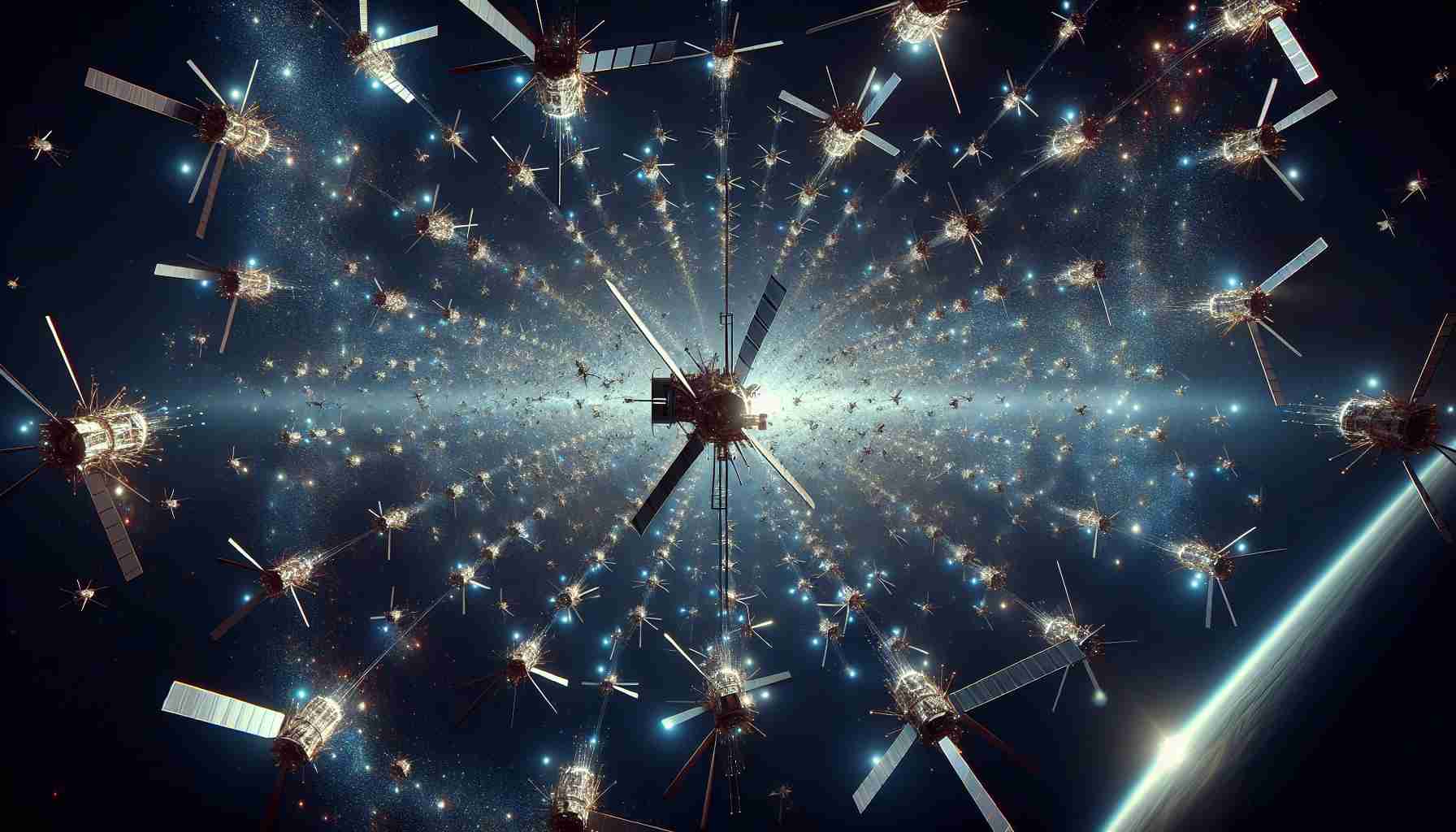- SpaceX is launching the Starlink 12-8 mission, adding 21 satellites to an existing network of over 7,000.
- The Falcon 9 rocket’s launch window is from 1:53 p.m. to 3:43 p.m. ET, with a strong 95% chance of clear weather.
- The first-stage booster, B1077, will attempt its 18th mission, showcasing a history of successful launches and recoveries.
- If needed, a backup launch opportunity is scheduled for Wednesday at 11:36 a.m. ET.
- The mission aims to enhance global internet access, particularly benefiting remote areas.
Get ready, space enthusiasts! SpaceX is set to unleash an exciting mission from Cape Canaveral Space Force Station. As the Falcon 9 rocket ignites its engines, the Starlink 12-8 mission will add another 21 satellites to the growing constellation of over 7,000 already orbiting our planet. With a launch window opening at 1:53 p.m. ET and closing at 3:43 p.m. ET, the SpaceX team is primed for another giant leap.
The weather looks promising with a 95% chance of clear skies, thanks to favorable forecasts by the 45th Weather Squadron. The only challenge? Keeping an eye on the potential for cumulus clouds. If the stars don’t align for Tuesday’s launch, SpaceX has a backup slot ready for Wednesday at 11:36 a.m. ET.
This mission marks the 18th voyage of the trusty first-stage booster, B1077, a veteran with an impressive track record. After sending up missions involving GPS, crewed flights, and a multitude of satellites, B1077 will once again strive for a heroic return, aiming to touch down gracefully on the droneship Just Read the Instructions in the Atlantic Ocean.
Why does this matter? Once these Starlink satellites are nestled in their low-Earth orbits, they’ll help expand internet capabilities for remote corners of the world, bridging digital divides and connecting more people than ever before. This is not just a launch; it’s a step toward global connectivity.
Stay tuned as SpaceX continues its quest to blanket the skies with Starlink, reaching for the stars and connecting the Earth below!
Discover the Future of Global Connectivity with SpaceX’s Starlink Mission!
Overview of SpaceX’s Starlink 12-8 Mission
SpaceX’s Starlink 12-8 mission represents another significant leap towards fully realizing a globally connected world, adding another 21 satellites to the vast constellation orbiting Earth. This mission is notable for its use of the Falcon 9 rocket and the trusty first-stage booster, B1077, marking its 18th journey.
Key Features and Innovations
1. Advanced Satellite Technology: The newly launched satellites come equipped with the latest tech improvements aimed at optimizing network coverage and internet speeds. These enhancements will allow even more remote areas to access reliable internet services.
2. Booster Reusability: The reliability and efficiency of the Falcon 9 rocket’s first-stage booster, B1077, highlight SpaceX’s pioneering reusability technology, which reduces costs and environmental impacts, furthering the sustainability of space launches.
3. Deployment Strategy: Starlink’s deployment strategy leverages a shell model in the low-Earth orbit with plans to achieve unprecedented global coverage, potentially covering underserved regions by the end of this decade.
Frequently Asked Questions
# What are the long-term impacts of the Starlink project on global internet connectivity?
Starlink aims to provide high-speed internet access to remote and underserved regions worldwide, reducing the digital divide and fostering economic and educational opportunities. It promises to deliver faster, more reliable internet access than existing terrestrial networks can currently offer.
# How does SpaceX’s launch strategy affect space sustainability?
SpaceX focuses on reutilizing its rocket components, notably with the Falcon 9’s first-stage booster, promoting sustainability. Additionally, satellites are designed to burn up in the atmosphere post-mission to reduce space debris, aligning with long-term space sustainability objectives.
# What challenges does Starlink face in its path to global expansion?
Challenges include potential regulatory hurdles, competition from other satellite internet providers, and concerns over space debris and light pollution. SpaceX is actively working on solutions, such as incorporating sunshades to reduce light pollution and adhering to international space traffic management guidelines.
Further Insights
– Competitor Comparison: Starlink’s primary competitors in satellite internet, such as OneWeb and Amazon’s Project Kuiper, are employing varied strategies and face different regulatory landscapes. The competitive dynamics will influence market trends and service accessibility.
– Market Analysis and Trends: Analysts project substantial growth in satellite internet services in the coming years, driven by increasing consumer demand and technological advancements, with Starlink positioned as a market leader.
– Security and Privacy: With the expansion of satellite internet, security and privacy concerns will rise, prompting companies to strengthen encryption and data protection measures.
For more information on SpaceX missions and innovations, visit SpaceX or explore current trends in satellite internet technology at Starlink.




















